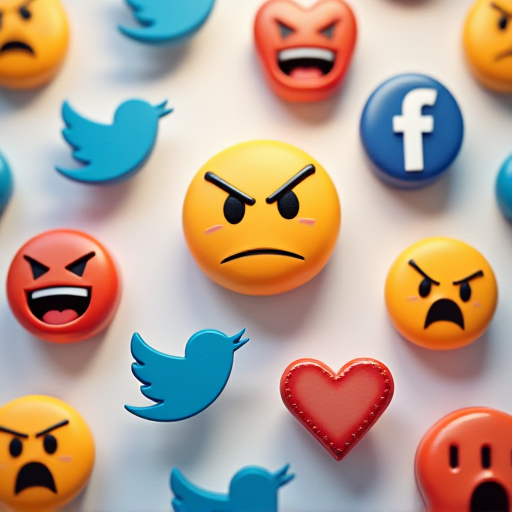
Why Has Social Media Become So Toxic?
In the digital age, social media platforms like Facebook, Twitter, Instagram, and TikTok have become integral parts of our daily lives. They offer unprecedented connectivity, allowing us to communicate with friends and family, share experiences, and access a vast array of information. However, beneath the surface of these online interactions lies a growing concern: social media has become increasingly toxic. In this article, we will explore the reasons behind this phenomenon and its impact on individuals and society.
The Rise of Toxicity
1. Anonymity and Lack of Accountability
One of the primary reasons social media can become toxic is the anonymity it provides. Users can create accounts with little to no personal information, allowing them to express opinions without facing real-world consequences. This often leads to a lack of accountability, where individuals feel liberated to say things they might not in face-to-face interactions. This anonymity can breed hostile behavior, such as trolling, cyberbullying, and spreading misinformation.
2. Echo Chambers and Confirmation Bias
Social media algorithms are designed to keep users engaged by showing them content that aligns with their interests and beliefs. While this can create a personalized experience, it also fosters echo chambers where people are exposed only to viewpoints that reinforce their existing opinions. This can lead to increased polarization and hostility towards those with differing perspectives, contributing to a more toxic environment.
3. The Spread of Misinformation
The rapid dissemination of information on social media is a double-edged sword. While it allows for the quick sharing of news and ideas, it also enables the spread of misinformation and fake news. This can create confusion, fear, and anger among users, further fueling toxic interactions. The challenge of discerning credible sources from false information contributes to the overall negativity on these platforms.
4. Comparison and Envy
Social media often showcases the highlights of people's lives, creating a skewed perception of reality. Users may compare their own lives to these idealized portrayals, leading to feelings of inadequacy, envy, and low self-esteem. This can result in negative emotions being projected onto others, fostering a toxic atmosphere.
5. The Role of Influencers and Public Figures
Influencers and public figures wield significant power on social media, often setting trends and shaping opinions. However, their actions and words can also incite controversy and division. The pressure to maintain a perfect image or capitalize on sensationalism can lead to toxic behavior, as individuals prioritize engagement over authenticity and ethics.
The Impact of Toxicity
1. Mental Health Issues
The toxic nature of social media can have profound effects on mental health. Increased exposure to negativity, cyberbullying, and unrealistic comparisons can lead to anxiety, depression, and stress. The constant need for validation through likes and comments can also result in a decreased sense of self-worth.
2. Societal Divisions
Toxic interactions on social media can exacerbate societal divisions, as individuals become entrenched in their beliefs and less willing to engage in constructive dialogue. This polarization can spill over into real-world interactions, affecting relationships and community cohesion.
3. Erosion of Trust
The spread of misinformation and fake news on social media can erode trust in institutions, media, and even personal relationships. As users become more skeptical of the information they encounter, it becomes increasingly challenging to distinguish truth from falsehood.
Addressing the Toxicity
1. Platform Responsibility
Social media companies have a responsibility to address toxicity on their platforms. This includes implementing stricter moderation policies, utilizing AI to detect harmful content, and promoting digital literacy to help users critically evaluate information.
2. Encouraging Positive Interactions
Promoting positive interactions can help counteract toxicity. This can be achieved by highlighting kindness, empathy, and constructive dialogue. Encouraging users to engage with diverse perspectives can also break down echo chambers and foster understanding.
3. Individual Accountability
Users must also take responsibility for their online behavior. Practicing digital etiquette, fact-checking information before sharing, and reporting harmful content can contribute to a healthier online environment.
Conclusion
Social media's transformation into a toxic space is a multifaceted issue that requires action from platforms, users, and society as a whole. By acknowledging the causes of toxicity and taking steps to mitigate its effects, we can work towards creating a more positive and inclusive digital landscape. As we continue to navigate the complexities of the online world, fostering a culture of respect and understanding will be essential for the well-being of individuals and communities alike.
